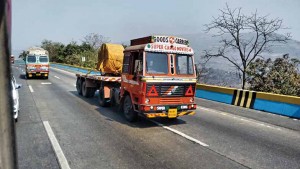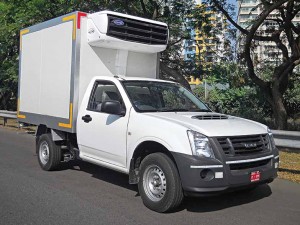GST for the transportation sector and the commercial vehicle industry will dial significant changes.
Story by: V G Ramakrishnan
GST would have rolled out by now, not relenting to the rising clamour for deferring it by a few months from a wide range of industries, and the banking sector. Apart from the deadline to implement GST, much has been discussed about its impact from the product taxation point of view; from the inflation point of view, and from the GDP growth perspective among others. The transition to the new tax regime under GST is likely to have a neutral or slightly positive impact on the commercial vehicle industry. Primary benefit would accrue from the removal of cascading taxes. Experts from diverse fields are of the opinion that GST in its current form does not differ much from the tax it will replace in terms of complexity, the number of tax slabs, and the huge burden of increased paper work.
With close to 60 per cent of the GDP contributed by the service sector, India in 2017 is largely a service driven economy. Manufacturing accounts for 25 per cent of the GDP. With GST simplifying a multitude of taxes on manufactured goods, compliance burden has increased significantly on the services sector, including the transportation sector. If the existing system requires service providers to pay service tax at a flat rate and file returns twice a year, under GST, the number of forms that are required to be filled increases to 37 in a year. This will lead to an increase in the compliance costs. Service organisations that operate in multiple states will have to register in each state that they operate in. This would be necessitated by the complex structuring of GST into Central GST and State GST. Many believe that GST is VAT 2.0 with improvements thrown in for good measure.
GST, there is no doubt, is a game changer. Whatever may be its shortcomings as of current, it is a game changer since it creates a single market with uniform tax rates across the country. This singular change has the potential to have a wide ranging impact on the transportation sector. It also has the potential to have a wide ranging impact on transport companies and truck manufacturers for years to come. GST is not the largest transformative tax legislation to either transform or disrupt the Indian economy. For the transportation and commercial vehicle industry, GST is expected to bring about a significant change. Changes that would broadly focus on the following factors: sales volume, segmental shifts, ancilliary businesses transitioning to the organised side, and OEMs developing strong positions and revenue streams. Changes would also broadly focus on factors such as the transformation and consolidation of the transportation industry. If and how the purchasing power of large fleet operators can be increased, and the impact on brand pofitability among others.
Warehouse transformation
The imminent change GST will drive is the redesign of warehouse network. Historically companies operated warehouses in various states to avoid multiple taxation. These warehouses were in many cases sub-optimally designed. They were used only to add additional costs across the supply chain, both in-bound and out-bound. With GST doing away with the need to maintain warehouses across states, manufacturers are quickly reorganising warehouse locations by shutting down sub-optimal facilities and consolidating into larger spaced facilities. In many cases organisations are cutting down the number of warehouses they have had by more than half, or by one third of their original network strength. Companies in high velocity inventory turns sectors may still continue to operate with many warehouses since their requirement is demand driven than being tax policy driven. The outcome of such rationalisation is expected to result in lesser yet larger warehouses that are markedly automated.
While it is likely that many companies will actively create or enhance warehouse closer to the manufacturing location as this will increase their ability to stock and service low volume products and improve efficiency, the impact of this reformation in warehouse network will impact transporter route plans, frequency of routes and vehicle tonnage requirement. As more goods are transported to larger stock holding warehouses, transporters will require higher tonnage trucks since the probability of corporates transforming to full load trucks over partial loads will be high. This trend is expected to increase demand for higher tonnage trucks in the next two-to-three years. Commercial vehicle manufacturers can expect a further acceleration of growth in the segments above 25-tonnes.
New routes will emerge as companies relocate warehouses to lower cost locations; locations with larger land availability. Market access and costs in balance will also play a role. This change will over time lead to the creation of a hub and spoke model. Markets particularly in East and parts of North India (like Punjab, Haryana, Himachal Pradesh, J&K and Delhi) are likely to move faster in creation of hub and spoke models. Over the long term, vehicles with less than two-tonnes will predominantly serve last mile connectivity. Vehicles in the four and 10-tonne segment (LCVs and some ICVs) will serve as a connection between the hub and spoke. Vehicles over 25-tonnes will serve as a connection between manufacturing locations and the hub.
Since the transportation industry operates on the basis of growth by tonnage, higher economic growth may not necessarily translate into higher volume growth for truck manufacturers. Segmental shift to higher tonnage will be evident over the medium and short term as the market adjusts to a structural change. From a freight stand point, demand for larger trucks could push freight rates up, and until the market reaches a balance. As the size of trucks increases, ticket size of trucks will grow. The ability of transporters to invest in business will rise too. While service debt could affect fleet acquisition plans, it coupled with the implementation of Bharat Stage IV emission norms will increase vehicle prices significantly. It is fairly established that the cost of BSIV upgrade will be significantly higher (as a per centage of the product cost) in lower tonnage vehicles compared to higher tonnage vehicles. The combined factors of emission upgrade and GST could churn the transport segments. One possible scenario that may emerge is of large transporters increasing their grip on first mile. Medium-sized operators could operate predominately in the hub to spoke segment, and small and individual truckers operate the spoke and last mile based on their financial capability. Transporters could increase their focus on niche segments, which require particular vehicle type to optimise the balance sheet.
Supply chain and vendors
GST is expected to drive changes in the business model across sectors. The transportation sector will have to evolve quickly. Two aspects of GST, chosen as examples, provide an indication of the changes that will sweep the transportation sector. First, the score system – similar to credit rating scores provided for each registered entity, will reflect an entity’s adherence to tax system, process and procedure. Corporates and companies can choose who to contract transportation based on the scores. As GST works on the principle of input tax credit, only those vendors and supply chain partners that file returns, will attract business. Transporters will have to maintain clean books of accounts and refrain from tax avoidance to avoid the risk of losing business. Companies and corporates looking for input tax credits will choose vendors that adhere to the new tax regime. GST is ushering in an era where market will regulate tax payment practices. Second, is the e-way bills. e-way bills will have an impact on the way transporters function. In this regard, GST is creating a digital foot print of each transaction and transport. Every e-way bill will have a certain period of validity. Transporters would be required to complete the delivery within the stated period. This will act as a huge deterrent for transporters, market load operators and small transporters in particular, against delay in delivering the cargo. A new e-way bill (from the consigner) will have to be generated beyond the validity period. Transporters will need to evolve their business practices. GST will call for a change of mind-set.
Organisational change
The prime objective of GST is to bring more and more transactions under the tax net; to increase transparency and compliance. The threshold for companies to register for GST has been lowered to Rupees-two million per annum as compared to Rs.10 million per annum limit in the past. Companies that were exempt from tax will now come under the tax net. This has the risk of making their products more expensive, and less competitive, as compared to the products produced by large-size organisations. The economy on the whole, is likely to get more organised. With increase in competition, smaller sized organisations are likely to ‘professionalise’ their operations, and grow to scale or exit. This trend is expected to play out among transporters as well. Transporters are also expected to engage in business transactions with vendors that are organised. This will enable them to benefit from input tax credit. While the current practice of consigners paying the tax on transportation will continue under GST, transporters that provide additional services will eventually charge GST and take credit for many input items like lubes, insurance, and tyres among others. Some of the services offered by roadside service providers like tyre retreading, repairs and maintenance are to come under the GST net. They will thus move up the value chain as GST compliant enterprises. The velocity of this movement will increase after the government brings petroleum products under GST. With increasing complexity in trucks, truck manufacturers can look at an increase in maintenance contracts, increase in the quantity of vehicles serviced, and at authorised service points.
Transformation long-haul
GST transformation is about change in money (tax reform), matter (business process, model) and mind (compliance). Rather than an overnight transformation, it will take time. Evidence of change will emerge only in the next 24 to 36 months. Any expectation of a quick change will lead to expectation mismatch and disappointment. GST entails a long-haul. It entails a long-haul journey for the transportation and commercial vehicle industry to realise the benefits. With GST the transportation sector and truck makers are embarking on a journey that will lead to a significant improvement in productivity, cost efficiency and growth.
—————————————-
V G Ramakrishnan is the Managing Director and Partner of Avanteum Advisors.






















